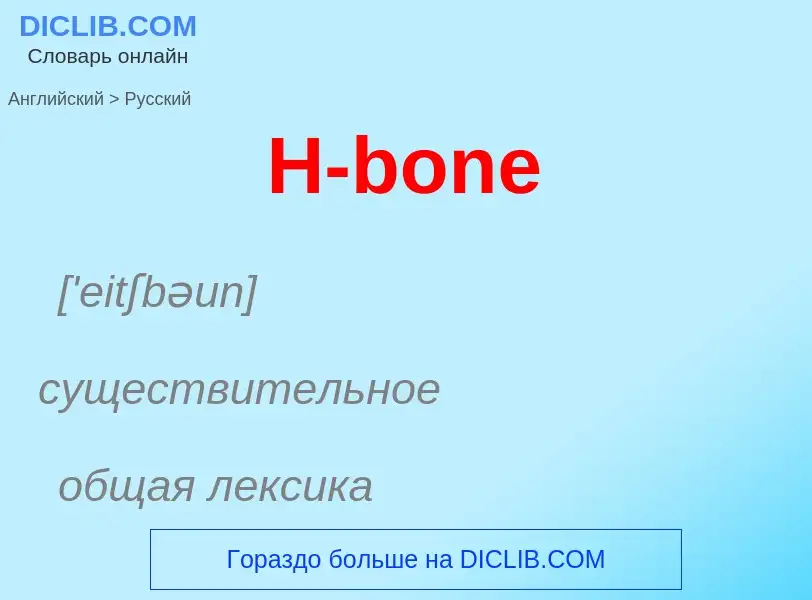Tradução e análise de palavras por inteligência artificial ChatGPT
Nesta página você pode obter uma análise detalhada de uma palavra ou frase, produzida usando a melhor tecnologia de inteligência artificial até o momento:
- como a palavra é usada
- frequência de uso
- é usado com mais frequência na fala oral ou escrita
- opções de tradução de palavras
- exemplos de uso (várias frases com tradução)
- etimologia
H-bone - tradução para russo
['eitʃbəun]
существительное
общая лексика
крестцовая кость
огузок
[eitʃ]
общая лексика
(hour) час
высота
сокращение
height
Смотрите также
существительное
общая лексика
8-я буква английского алфавита
8-й номер серии
H (интенсивность магнитного поля)
(H) в грам. знач. прил. (также как компонент сложных слов) имеющий форму буквы H
H-образный
героин
физика
(H)
электротехника
генри
синоним
Wikipédia

In archaeology, a bone tool is a tool created from bone. A bone tool can conceivably be created from almost any bone, and in a variety of methods.
Bone tools have been documented from the advent of Homo sapiens and are also known from Homo neanderthalensis contexts or even earlier. Bone has been used for making tools by virtually all hunter-gatherer societies, even when other materials were readily available. Any part of the skeleton can potentially be utilized; however, antlers and long bones provide some of the best working material. Long bone fragments can be shaped, by scraping against an abrasive stone, into such items as arrow and spear points, needles, awls, and fish hooks.
Bone tools had mainly been made from bone splinters or were cut into a useful shape. Archaeologists are convinced that bone tools were purposefully made by deer antlers cut into shape.
The bone was fashioned into tools such as spoons, knives, awls, pins, fish hooks, needles, flakers, hide scrapers and reamers. They made musical rasps, flutes and whistles as well as toys of bone. Decoratively carved articles were also made of bone such as hair combs, hair pins and pendants. Antler is much harder than bone and was used for flakers, points, knives and hair combs. Even the teeth and hooves did not go to waste. The teeth were drilled and used for decoration on clothing and necklaces. The hooves were also drilled and used for decoration on clothing as well as strung for rattles and bells.
As an organic material, bone often does not survive in a way that is archaeologically recoverable. However, under the right conditions, bone tools do sometimes survive and many have been recovered from locations around the world representing time periods throughout history and prehistory. Also many examples have been collected ethnographically, and some traditional peoples, as well as experimental archaeologists, continue to use bone to make tools.


